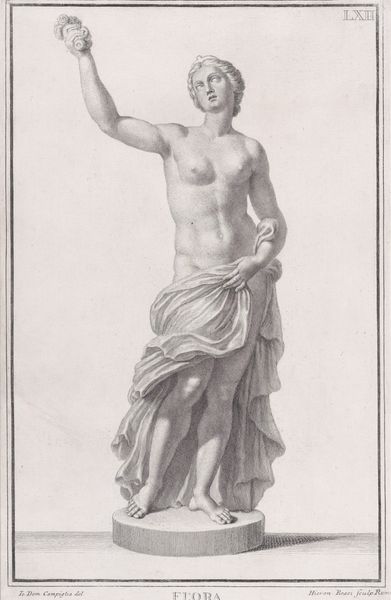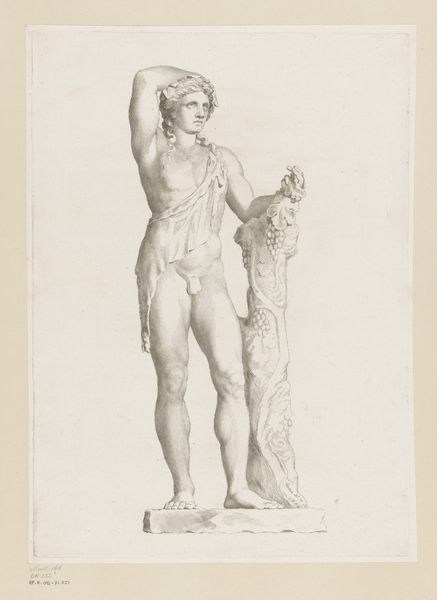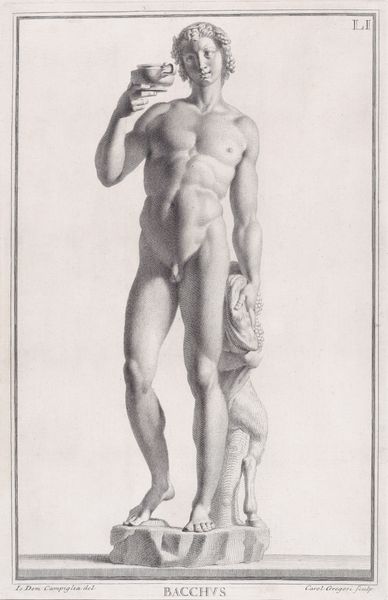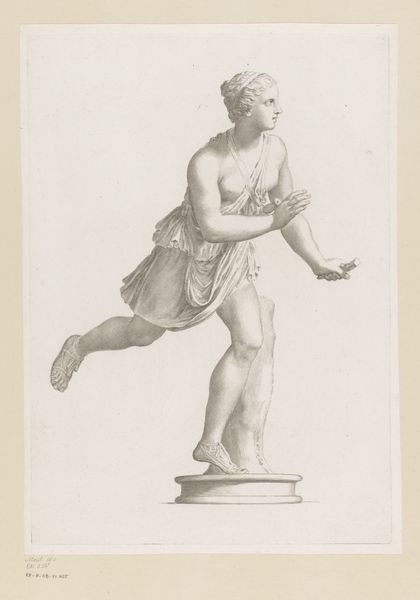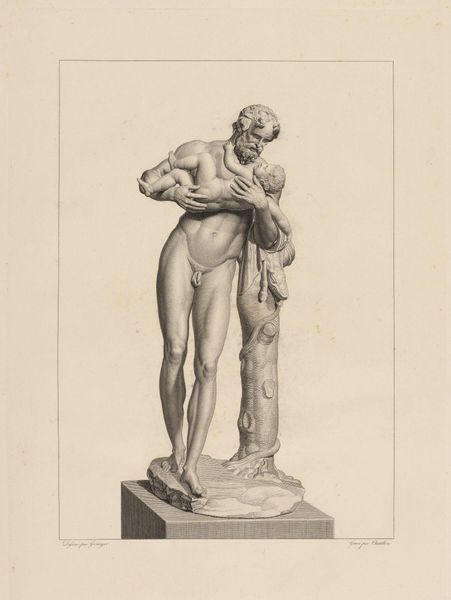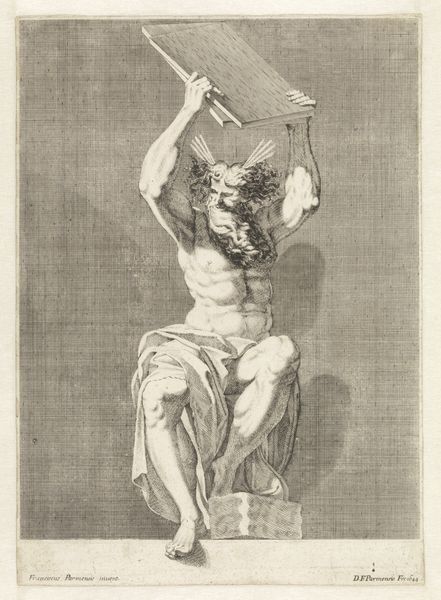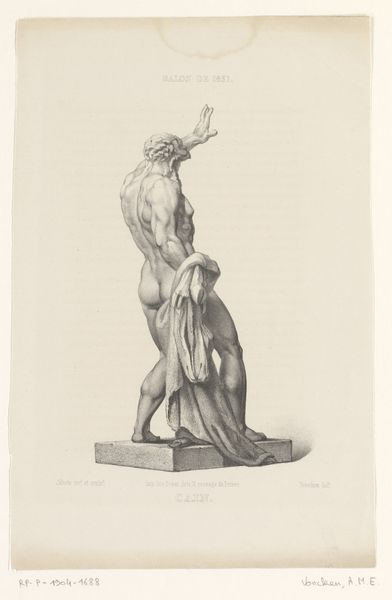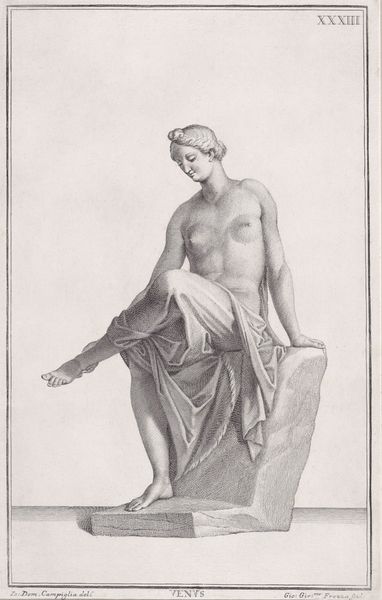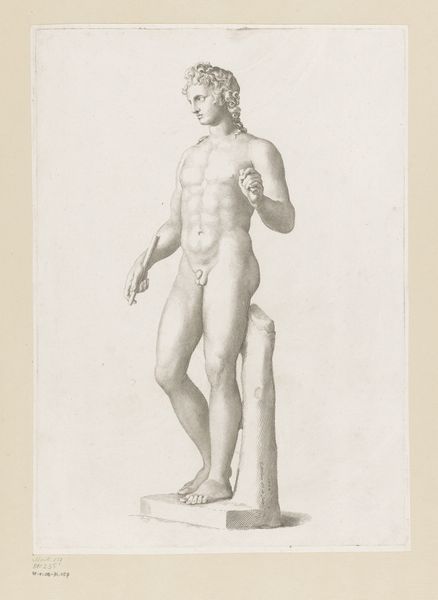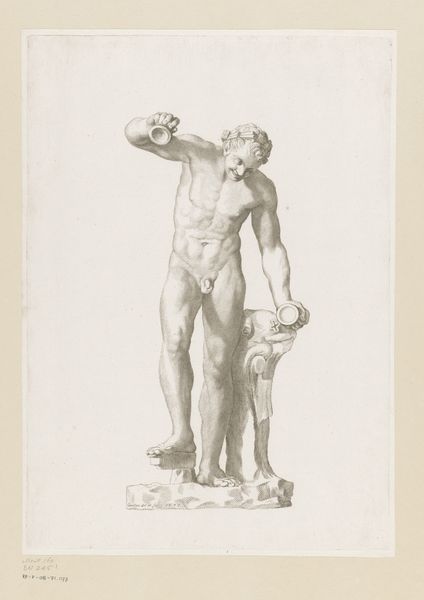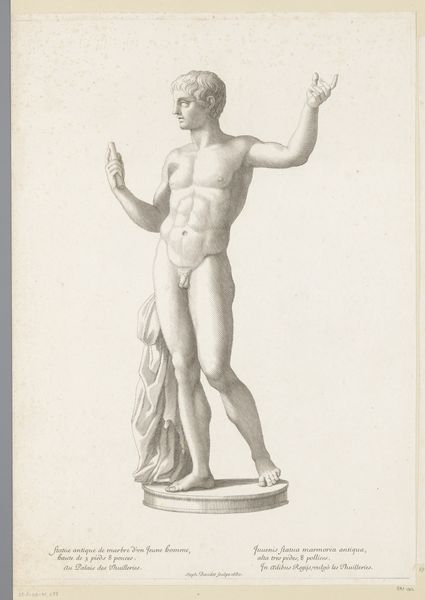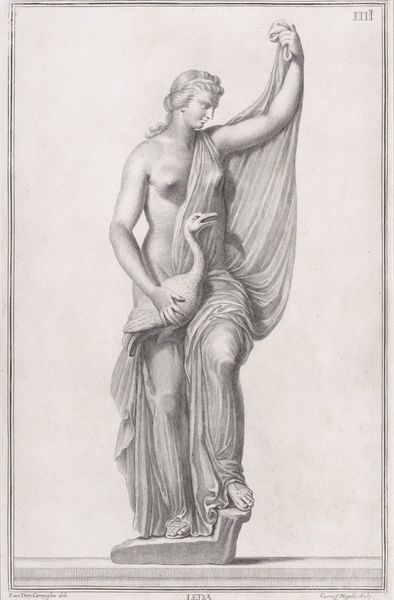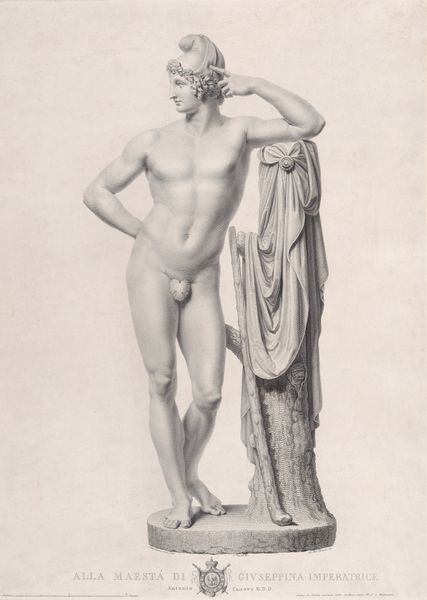
Plate LXXI (71): Narcissus, from "Museum Florentinum" (Statuae antiquae dorum et virorum illustrium) 1734
0:00
0:00
drawing, print, engraving
#
drawing
#
baroque
#
portrait image
# print
#
history-painting
#
nude
#
engraving
Dimensions: Sheet: 14 15/16 × 10 1/16 in. (38 × 25.5 cm) Plate: 14 3/16 × 9 1/16 in. (36 × 23 cm)
Copyright: Public Domain
Carlo Gregori created this print of Narcissus as part of the "Museum Florentinum" collection during the 18th century, a time when the rediscovery and study of classical antiquity was in vogue. This image presents a nude male figure, reflecting the period's fascination with idealised forms and beauty, yet it also invites us to consider the complexities inherent in such representations. How does the male body become an object of contemplation and desire? Narcissus was a figure from Greek mythology known for his beauty and self-obsession. Gregori's print encourages us to consider how identity and desire are shaped by both internal reflection and external perception. Does Narcissus's story serve as a cautionary tale about the perils of vanity, or could it be viewed as an exploration of the self and the fluidity of identity? Consider the emotional depth of the statue: the longing, the tragic nature of self-love.
Comments
No comments
Be the first to comment and join the conversation on the ultimate creative platform.
